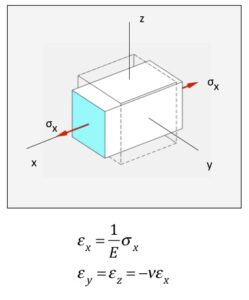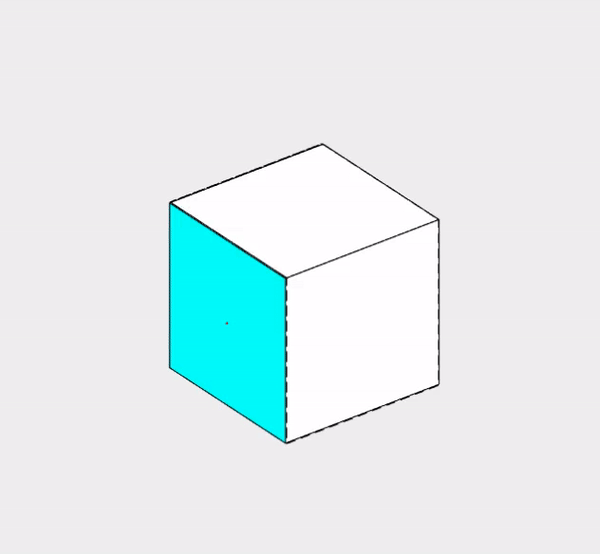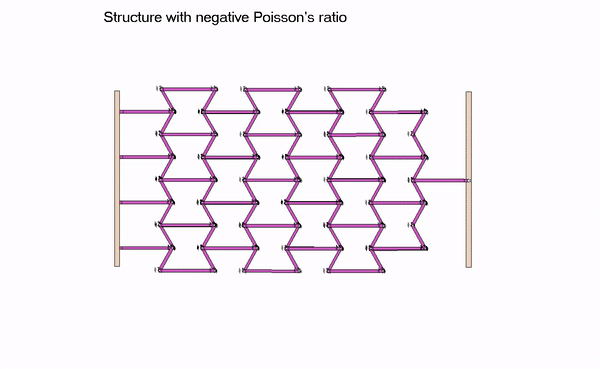Uniaxial loading

- Tensile/compressive stress in the x-direction produces tensile/compressive strain in the x-direction, with the stress and strain related through Young’s modulus E:
- Strain in the x-direction produces strains the y– and z-directions. The strains in the y– and z-directions are proportional to the strain in the x-direction through the negative of the Poisson’s ratio.
Positive Poisson’s ratio
If the Poisson’s ratio of the material if positive, then tensile/compressive strains in the x-direction produce compressive/tensile strains in the y- and z-directions, as shown below.

Negative Poisson’s ratio
If the Poisson’s ratio of the material if positive, then tensile/compressive strains in the x-direction produce tensile/compressive strains in the y- and z-directions, just the opposite of that for a positive Poisson’s ratio.
QUESTION: Can a material possess a negative Poisson’s ratio? The answer is “yes”. Such materials are known as “auxetic materials”. From above, we see than an auxetic material will expand in the transverse directions for a tensile axial load. Consider the animation below of such a material, and study how a negative value for Poisson’s ratio is possible with this material. As can be seen here, a compressive axial load produces contraction in the transverse direction, and a tensile axial load produces expansion in the transverse direction.

Some examples of auxetic materials include:
-
- Auxetic polyurethane foam.
- Kevlar woven composite materials used for body armor.
- Nuclei of mouse embryonic stem cells in exiting pluripotent state.
- Certain states of crystalline materials: Li, Na, K, Cu, Rb, Ag, Fe, Ni, Co, Cs, Au, Be, Ca, Zn, Sr, Sb, MoS2, BAsO4, and others.
- Certain rocks and minerals.
- Graphene, which can be made auxetic through the introduction of vacancy defects.
- Carbon diamond-like phases.
- Noncarbon nanotubes.
- Living bone tissue (although this is only suspected).
- Tendons within their normal range of motion.
- Specific variants of polytetrafluorethylene polymers such as Gore-Tex.
- Several types of origami folds like the Diamond-Folding-Structure (RFS), the herringbone-fold-structure (FFS) or the miura fold, and other periodic patterns derived from it.
- Tailored structures designed to exhibit special designed Poisson’s ratios.
- Chain organic molecules. Recent researches revealed that organic crystals like n-paraffins and similar to them may demonstrate an auxetic behavior.
